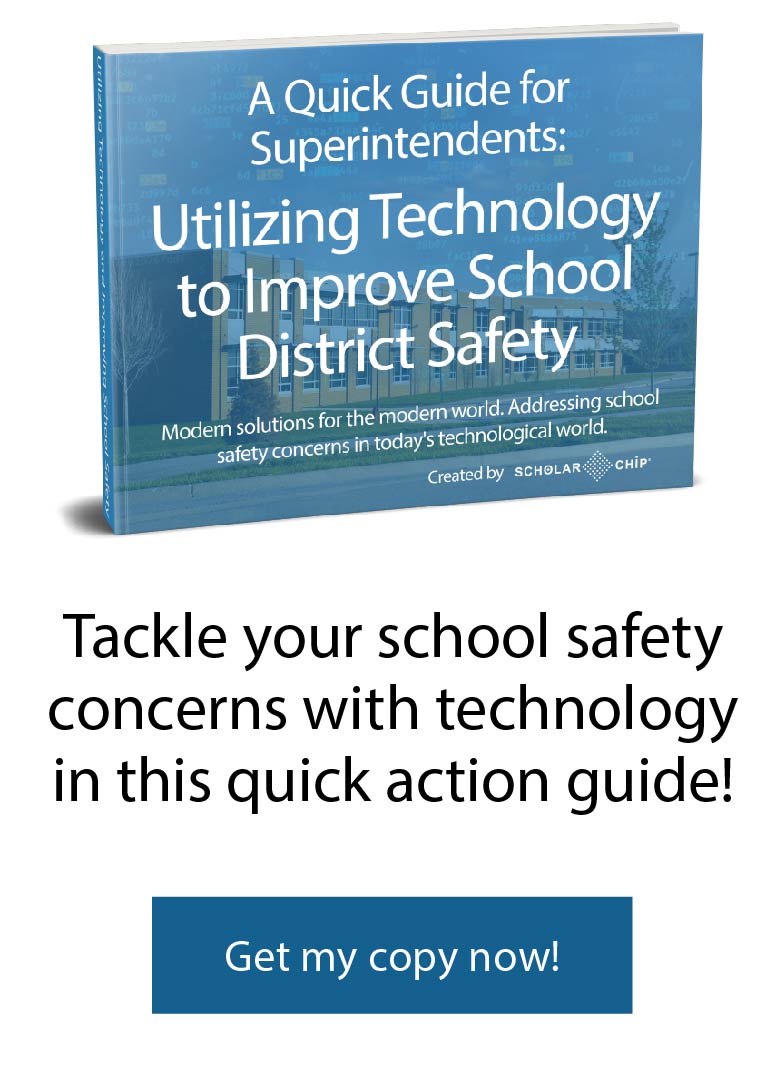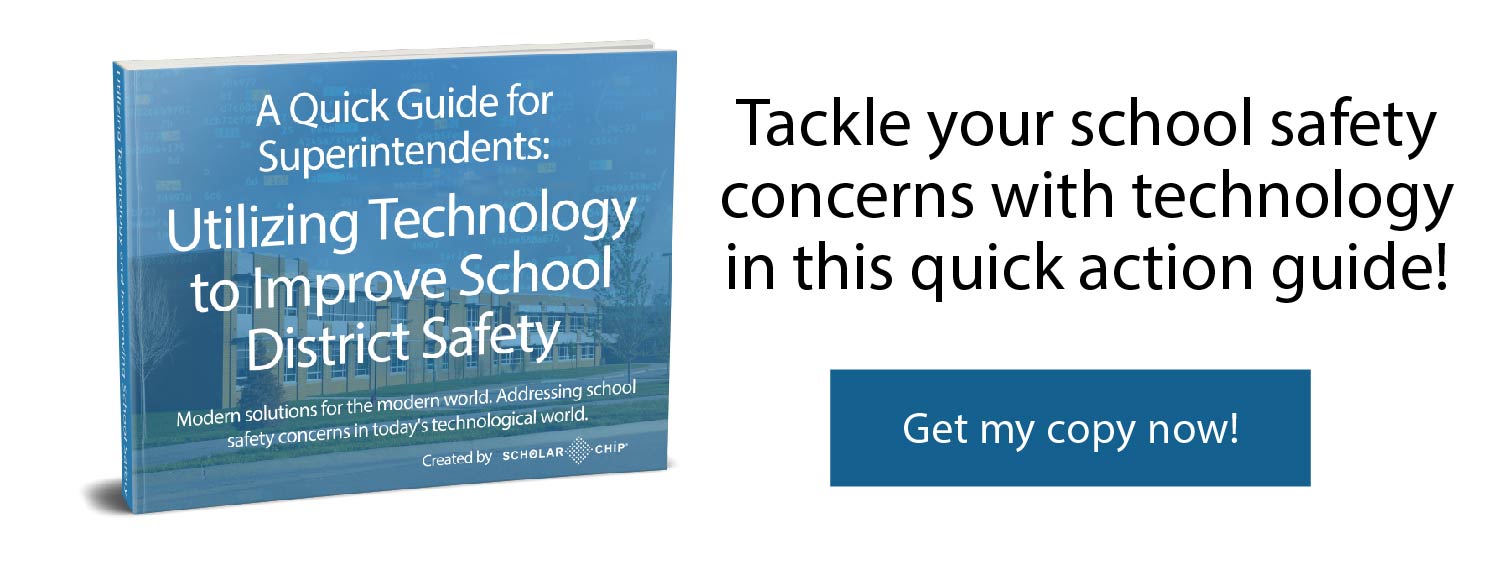Nearly a decade ago, the U.S. Department of Education released the first National Education Technology Plan. “With this technology plan,” said Education Secretary Arne Duncan, “we have laid out a comprehensive vision for how teachers working with technology can transform student learning in classrooms across America.” Over the ensuing years, advances in school technology plans have transformed learning and teaching. The ConnectED initiative provided funding to bring broadband to schools, which expanded internet access to districts across the nation. Data management systems enabled districts to increase productivity while keeping costs under control. The newest challenge facing school leaders is how to integrate these systems to better secure buildings and provide for the safety of students and school personnel.
The 2016 RAND report, “Role of Technology in Improving K–12 School Safety” is an analysis of data on school violence and the effectiveness of technology to address security issues in schools. The report concludes that technology has the potential to improve school safety in several areas. These areas include developing comprehensive school safety plans, improving communication strategies, and ensuring old systems are updated and integrated with legacy systems. School Technology plans can address these areas, and other security issues such as building access and behavior management, for comprehensive, state-of-the-art solutions to security vulnerabilities.
Integrated systems provide comprehensive security
Traditionally, security systems are considered separately from technology plans and even fall under different line items in a school budget. SIS and attendance systems, education software, behavior management, and administrative systems, typically, are distinct programs as each system was added as the technology and funds became available. For many schools, these legacy systems are outdated and costly to maintain. Updating to new technology can bring all these systems under one umbrella of security, including building access and visitor management so that you can address school threats.
Predominant threats to students, staff, and faculty
Armed intruders make headlines, but statistically, most schools will never have to deal with a school shooting. While hardening a school building with the addition of security cameras, metal detectors and other hardware may appear to make schools safer, the National Association for School Psychologists points out that there is no evidence these measures have been effective in protecting students. Moreover, some research shows that overt security measures can contribute to school violence by creating a “street culture” that emphasizes self-protection. Resources may be better used to fund programs that build a school culture of caring and inclusiveness, one with systems in place for identifying and mitigating threats.
A system that collects and store data on attendance, building access, behavior incidents and interventions in real time are less obvious security measures that, when available from the main dashboard, give building administrators a level of control over their school not possible with legacy systems. Information is stored in the cloud, safe in the event of damage to onsite servers and accessible from mobile devices. Such a system facilitates internal and external communications, increasing parental involvement and, in the event of an emergency, relaying relevant information to first responders.
Solution #1: Control over visitor access
Most schools have protocols to keep out unwelcome visitors. These range from a request that visitors sign in at the main office, to electronic doors that require visitors are “buzzed” in by security personnel. These systems may be a temporary barrier to those with nefarious motives, but they are imperfect safety measures and impractical at the start of the day and at dismissal when crowds of students are moving in and out of buildings.
With a visitor management system like ScholarChip’s, you can verify who the visitor is exactly that is visiting your campus grounds. With a scan of their state-wide ID or driver’s license, you will be able to grab all the relevant information needed, as well as cross-checking the visitor with a registered sex-offender database. This beats manual sign in, and helps administrators flag potential risks.
Solution #2: Automate attendance
With an automated attendance system, attendance is automatically recorded, relieving teachers of having to manually enter attendance at the start of class, freeing them to attend to their students. With a smart ID card, attendance data is complete and accurate, not subject to human error as is often the case with manually entered attendance. These systems have mobile capabilities, allowing students to record their attendance in extra-curricular activities, on school buses and field trips. Giving students the responsibility of reporting their own attendance and holding them accountable of their attendance has psychological benefits as well, holding students accountable.
Solution #3: Building Access
Smart ID card readers may be installed throughout the building, requiring cardholders to tap their ID for access to specific rooms or areas. This allows school personnel to locate errant students and restrict students from off-limit areas. As would be expected, the RAND report found that most incidents of bullying and other victimizations in schools occur in areas where there is no adult supervision. A smart ID card system could keep isolated areas closed off to students and help identify problem areas of the building.
Solution #4: Admin dashboard for real-time data
Integration of information systems allows administrators to access real-time data from an administration portal. Superintendents and building principals can know the status of buildings, students, and personnel instantly. Integrated communication systems allow for automation of specific tasks, such as emailing a parent when a student does not check in at the start of the day or issuing district-wide emergency notifications. From an administration dashboard, school leaders can quickly produce reports to identify risks and inform decisions.
Solution #5: Behavior management systems
Student behavior patterns often go unnoticed as behavior reports from multiple classes spanning several school years are not always combined to create a complete picture. A teacher may fail to do more than issue an oral warning to a student, not recognizing the behavior is part of a larger pattern of behaviors. Including behavior management systems in school technology plans gives teachers and other school personnel a way to quickly record behaviors, interventions, and results. Reporting functions combined with behavior modification programs can streamline behavior management and include student participation for building a sense of personal responsibility. Keeping student behavior records in one location can facilitate CSE recommendations and aid IEP team collaboration.
ScholarChip is an all-in-one, platform solution to help reduce school threats and address the important issues surrounding school safety. Data from students, faculty, and stakeholder are leveraged to manage school access, attendance, and behavior management through the platform tools to increase safety and promote the campus climate schools are looking for.
To learn more about how you can proactively address school threats and increase your campus culture, schedule a 1-on-1 strategy session with one of our specialists today!


